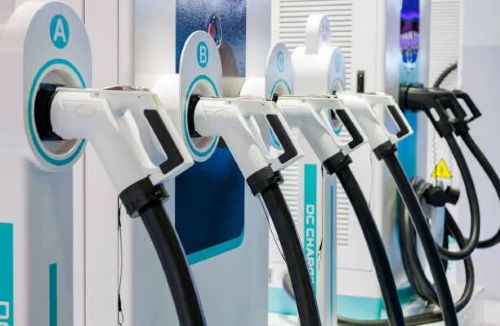


Understanding DC Fast Charging: The Future of Rapid EV Refueling
As electric vehicles (EVs) become mainstream, the demand for faster charging solutions is accelerating. Among these, DC fast charging—also called Level 3 charging—stands out as the most powerful and time-saving option. Whether you’re on a road trip, managing a fleet, or simply need a quick top-up, DC fast chargers deliver rapid energy to get you moving again.
Unlike Level 1 and Level 2 chargers that supply alternating current (AC) to the vehicle, DC fast chargers convert AC to direct current (DC) at the station and send it straight to the car’s battery. This direct delivery bypasses the vehicle’s onboard charger, enabling significantly faster charging.
Level 1: 20+ hours for a full charge
Level 2: 4–8 hours
DC Fast Charging: 20–30 minutes for 80% charge
This makes DC fast charging ideal for long-distance travel, commercial EV fleets, and drivers with limited time.
Connector types vary by region and manufacturer. Here are the major ones:
CCS (Combined Charging System): The most widely adopted standard in Europe (CCS2) and North America (CCS1). Compatible with both AC and DC, it’s rapidly becoming the industry norm.
CHAdeMO: Primarily used in older Japanese models like the Nissan Leaf. Once popular, it’s now being phased out in favor of CCS.
Tesla Supercharger: Tesla uses a proprietary connector in North America but supports CCS in Europe. Some Tesla stations are now open to non-Tesla EVs with compatible connectors or adapters.
Tip: Always check your vehicle’s connector type and max DC charging rate before using a fast charger.
Charging speed isn’t just about the charger—it depends on your EV’s hardware. Some models, like the Hyundai IONIQ 5 or Porsche Taycan, support ultra-fast charging up to 350 kW, while others max out at 50–100 kW.
Key factors:
Max Charging Rate: Dictates how fast your EV can accept energy
State of Charge (SOC): Charging slows as the battery nears full
Thermal Management: Better systems allow longer high-speed charging
Some EVs (e.g., Fiat 500e) don’t support DC fast charging at all, so check your manual or specs.
DC fast charging is usually more expensive than AC charging—and for good reason. The infrastructure is more complex, drawing higher power and requiring advanced components.
Pricing models include:
Per kWh: Based on actual energy delivered
Per Minute: Time-based, regardless of power flow
Idle/Session Fees: Additional costs if the vehicle stays plugged in after charging
Pro tip: Don’t use a 250 kW charger if your EV can only take 50 kW—it wastes money without speeding up your charge.
DC fast charging is best for:
Road trips or long drives
Commercial fleets needing quick turnarounds
Emergency top-ups when you’re low on charge
Urban dwellers without home charging access
For everyday use, Level 2 charging is usually more cost-effective and better for long-term battery health.
DC fast charging is evolving with higher outputs (400–500 kW), battery-buffer systems, and vehicle-to-grid (V2G) capabilities. As coverage expands, it will become even more essential to the EV landscape.
DC fast charging is a powerful tool—but best used strategically. Know your EV’s capabilities, choose compatible stations, and match your needs to the right charger. It’s not for daily use, but when speed matters, it’s the ultimate solution.Know more about Google SEO Directory
